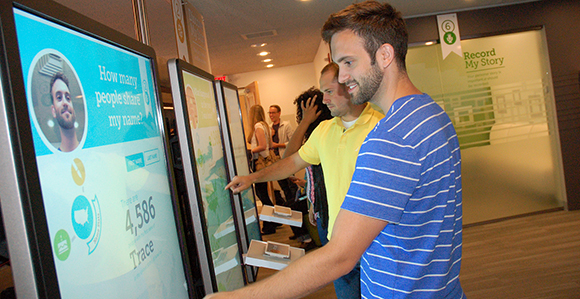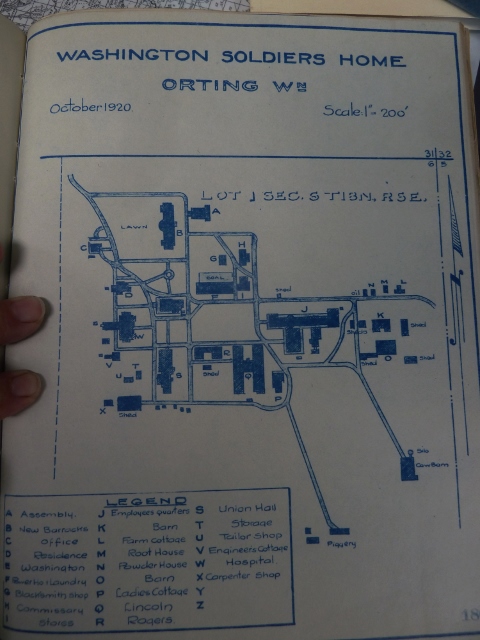Here are some quotes that our ancestors no doubt heard and allowed to be guides to their lives:
James Madison: “Knowledge will forever govern ignorance; and a people who mean to be their own governors, must arm themselves with the power which knowledge gives.”
George Washington: “Knowledge is in every country the surest basis of public happiness.”
Thomas Jefferson: “Great standard works of established reputation, too voluminous and too expensive for private libraries, should have a place in every public library, for the free resort of individuals.” (What would Thomas think of being able to access these “standard works of established reputation” on our phones, tablets or Kindles?)
Maybe our modern-day generation would recognize a quote from Michael Crichton: “If you don’t know history, you don’t know anything. You are a leaf that doesn’t know it’s part of a tree.”
Or this from LDS apostle, Dieter F. Uchtdorf: “History teaches us not only about the leaves of existence, but it also teaches about the twigs, branches, trunks and roots of life. And these lessons are important and needful to us.”
**************************************
At the recent NGS conference in St.Charles, Missouri, which I attended, I learned of this new website and research opportunity: www.gengophers.com ……. or Genealogy Gophers. “Find your ancestors in 40,000 digital genealogy books!” And it’s FREE! Who knows but you might find via this website a book that you’ve long sought.
**********************************
Did you know that one of our favorite genealogy magazines, Family Chronicle, has morphed into Your Genealogy Today? Why, after 18 years, was there a name change? Ed Zapletal and Rick Cree decided that it was time “to refresh and renew the look with an eye to making the publication more recognizable within the genealogy community and to the general public as well.” Readers still may subscribe to the paper issues for $25 annually (six issues) or for $14.95 in a PDF format.
************************************
There are still nearly six months of FREE family history webinars available to you via this link: www.FamilyTreeWebinars.com. These free webinars are usually on Wednesdays and last about an hour each. The agenda for July includes these topics: Researching Female Ancestors, Pinning Your Family History (using Pinterest), Have Swedish Roots and Don’t Know How to Get Started? and Storyboard Your Family History. You’ll remember that in my classes I’ve taught many of you that “if it’s free, take two!” Make it so for yourself.
**********************************
We all have “enjoyed” the rain and unusual hail to our parts of Washington but we’re lucky we had nothing like this! From The Family and Vicissitudes of John Phillips, Sr., of Duxbury and Marshfield (Massachusetts), by Azel Ames, 1903, page 13-14 (copied for you here just as it was in the book):
“In the month of August in the year 1658, there was in the Towne of Marshfield, a terrible storm of Thunder Lightning & raine, & and as I was going homeward being about a mile from home I met with one John Phillips & another man coming out of a meadow from making hay to the next house for shelter from the storm, who advised me to goe in with them to the house least I should be overtaken in the storm ere I should get home the storm then coming up exceedingly black and Terrible. I accordingly went in with them, & the said Phillips sat downe on a stoole with his face toward the Iner door & his back to the hearth & his side closs to the Jam of the chimney. I sat down with my face directly toward him about six foot from him, the Thunder came quickly up over the house. The Clouds flying exceeding Low and thick soe that the heavens wee much darkened Then in a moment came downe (as it were) a great ball of fire with a Terrible crack of Thunder & fell Just before where the sd Phillips sat, my eye then happening to be on him saw him once start on the stole he sat on & fell form thence dead on the hearth backward without any motion of life, many bricks of the chimney were beaten downe the principle Rafters split the battens and lineing next the chimney in the chamber broken, one of the maine posts of the house into which the sumer (girder) was framed torn into shivers & great part of it carried severall rod from the house, the dore where the fall of fire came downe Just before the sd Phillips was broken downe, out of the girt or sumer aforesaid being a dry oake was peices wonderfully taken. I doe not remember there was any outward appearance of hurt upon the body of the sd Phillips, a young child being at that moment about three foot from sd Phillips had noe harm.”
A bit later in the article was this comment: “This tragic and notable event is said to have been the earliest known death by lightning in the New England colonies and was very widely noticed and recorded.”
*************************************
I recommend chosing David Hackett Fischer’s Albion’s Seed, for your summer reading. Written in 1989, Wikipedia explains the message of the book thusly: Albion’s Seed: Four British Folkways in America is a 1989 book by David Hackett Fischer that details the folkways of four groups of people that moved from distinct regions of England (Albion) to the United States. The argument is that the culture of each of the groups persisted and that these cultures provide the basis for the modern United States.
The book is available at your library or for about $3.00 via Amazon.com. I found it especially helpful to understanding the Scots-Irish.
*********************************************************
“Things My Granddaddy said….”, from Postcards Magazine, publication of Montgomery County, Texas.
His breath’s so strong, you could hang out the washing on it.
That coffee’s so strong it’ll walk into your cup.
He’s so strong he makes Samson look sensitive.
Anytime you happen to pass my house, I’d sure appreciate it.
You small like you want to be left alone.
Even the chickens under the porch know that!
Confused as a goat on Astroturf.





